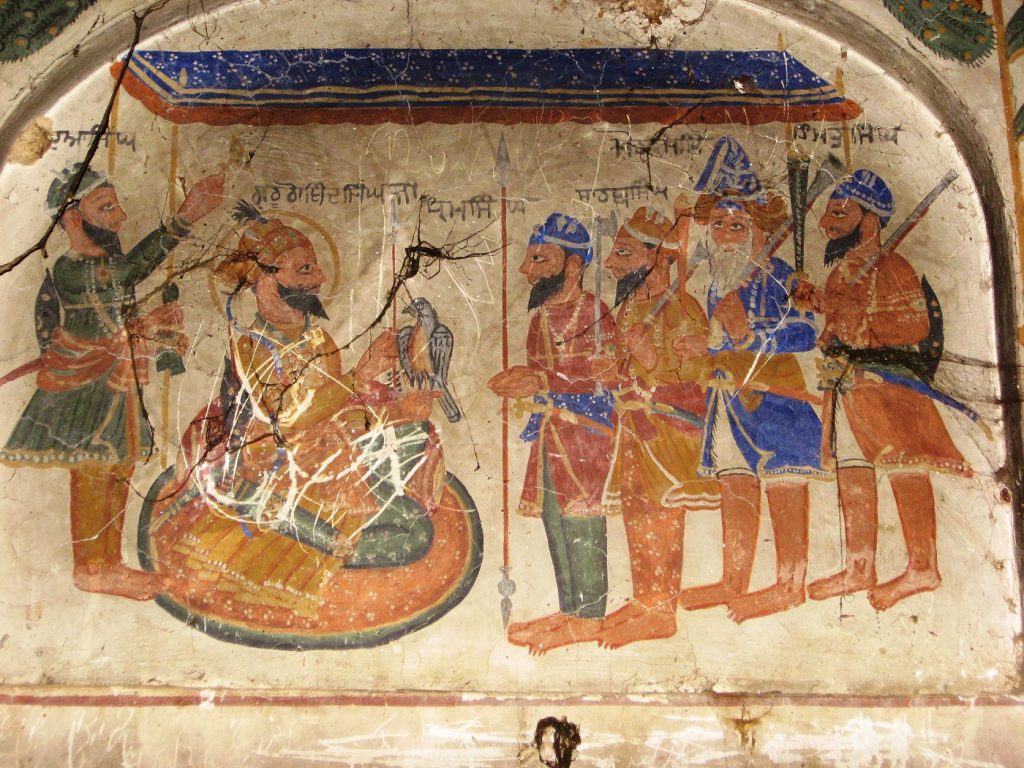DEVA SINGH, SARDAR BAHADUR(d. 1872), son of Fateh Singh and a great grandson of Savan Singh, cousin of Sarigat Singh, the leader of the Nishanavali misi, came of a Shergil Jatt family of Mansurval, in Firozpur district. Deva Singh joined service under Maharaja Ranjit Singh in 1816 at a very young age. After some time, he was put under Lahina Singh Majithia who made him commandant of the regiment of his brother, Gujjar Singh. In 1834, he accompanied the young Sardar to Calcutta on a mission half complimentary, half political. In 1842, he was transferred to the Gurkha regiment to serve in Hazara.
DEVA SINGH, SIR (1834-1890), a highranking Patiala state administrator, was born in 1834 into an Arora Sikh family, the son of Colonel Khushal Singh, a brave soldier who had once killed a tiger (sher, in Punjabi) near one of the city gates conferring upon it the name Sheranvala which lasts to this day. Deva Singh received the only formal education available at that time by attending a maktab or Persian school, and entered Patiala state service at a very early age in 1846. In 1853, he was appointed assistant judicial minister and in 1855, a Risaldar in a cavalry unit.
Discover the legacy of the Panj Mukte, the first five Sikhs initiated by Guru Gobind Singh in 1699, and their role in Sikh history.
BHUP SINGH, SARDAR, remembered as Raja Bhup Singh in local lore, was the chief of the Sikh principality of Ropar, during the earlier half of the nineteenth century. Little is known about his life except that in 1808-09 he, along with Deva Singh, was in possession of Ropar and its adjacent districts including Khizrabad and Mianpur, a tract covering 115 villages with an estimated annual revenue of Rs 53,000. He was probably a grandson of Sardar Hari Singh of Dallevalia misi, who, according to Lepel.
DEVA SINGH NAROTAM, PANDIT (d. 1924), Nirmala scholar, was the son of Mahitab Singh of the village of Janetpura, 13 km north of Jagraori (30° 47`N, 75° 28`E), in Ludhiana district of the Punjab. He received his early lessons in the Sikh texts at the hands of Bhai Gurdit Singh and then left home to continue his studies under Sant Nattha Singh of Gurdwara Tapiana Sahib at Khadur Sahib, in Amritsar district, and later under Sant Mahna Singh (d. 1890) at the Nirmala dera or monastery at Khandur, near Mullaripur, in Ludhiana district. He accompanied Sant Mahna Singh to Bhai Rupa, a village 18 km north of Rampura Phul in Bathinda district, to join the Nirmala monastery called Dera Khuharivala. Here, Deva Singh, already reputed enough as a scholar to be known as pandit (lit. learned scholar), was put by his mentor through a course of comparative study of gurbani in the light of his knowledge of Sanskrit and Vedanta.
DEVA SINGH, BHAI. and Bhai Ishar Singh were among the Five Muktas, who formed the first batch after the Parij Piare to receive baptism of the Khalsa on the Baisakhi day of AD 1699. According to Rahitnama Hazuri Bhai Chaupa Singh Chhibbar, the draft of a rahitnama was prepared by these Muktas which later received Guru Gobind Singh`s approval. Bhai Deva Singh and Bhai Ishar Singh fell fighting in the battle of Chamkaur (7 December 1705).



